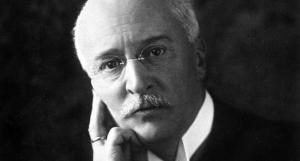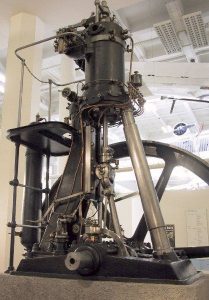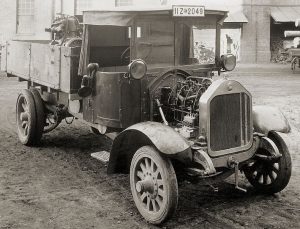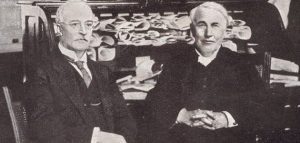By: Matt Wolfe
The roots of the modern diesel engine can be traced back to the industrial revolution, and lead directly to the man for which the engine is named; Rudolf Diesel. Diesel (1978 Hall of Fame Inductee) was the German engineer who first patented the design for an internal combustion engine that required no ignition source.
Born in Paris in 1858, Diesel became fascinated with engine design at an early age. A graduate of Munich Polytechnic, Diesel began development on a new engine concept as early as 1885. Diesel’s goal was to create an engine that was exponentially more efficient than the steam and gasoline powered engines of the period.
Inspired by French physicist Sadi Carnot and Munich professor Carl von Linde, Diesel theorized that he could produce an internal combustion engine capable of converting up to 75 percent of its fuel energy into propulsion, versus the contemporary steam and gas engines that utilized only 10 percent of their burned fuel. He published a paper in 1893 describing an engine with combustion within a cylinder titled “Theory and Construction of a Rational Heat Engine to Replace the Steam Engine and Contemporary Combustion Engine”. He called his invention a “compression ignition engine”.
Diesel received financial backing to develop his engine from Maschinenfabrik Augsburg (present-day MAN Diesel) and Friedrich Krupp AG (now ThyssenKrupp). Diesel completed his first working prototype in 1893. He was nearly killed by his prototype when it suddenly exploded during a test. The accident left him with poor eyesight for the rest of his life. After refining his original design, he introduced his new engine to the world at the 1898 Munich Exhibition.
The 25-horsepower motor consisted of an iron cylinder that stood 10 feet tall with a flywheel at its base. In addition to the engine’s remarkable efficiency, its ability to self-ignite its fuel source enabled it to run on a variety of different oils, including bio-fuels such as peanut oil. Of his engine, Diesel wrote; “It is the diesel’s higher compression ratio that leads to its greater fuel efficiency. Because the air is compressed, the combustion temperature is higher, and the gases will expand more after combustion, applying more pressure to the piston and crankshaft”.
 Though Diesel’s initial purpose for his invention was to assist small businesses that did not have the capital to operate less efficient engines, his motor spawned its own revolution. By 1912, there were more than 70,000 diesel engines in operation around the world. Diesel’s engine was most commonly used in trains, factories and generators, but would later be adapted for use in a multitude of different applications, including automobiles. MAN produced the first truck to use a direct-injection diesel engine in 1924. A Mercedes-Benz designed diesel automobile followed in 1936.
Though Diesel’s initial purpose for his invention was to assist small businesses that did not have the capital to operate less efficient engines, his motor spawned its own revolution. By 1912, there were more than 70,000 diesel engines in operation around the world. Diesel’s engine was most commonly used in trains, factories and generators, but would later be adapted for use in a multitude of different applications, including automobiles. MAN produced the first truck to use a direct-injection diesel engine in 1924. A Mercedes-Benz designed diesel automobile followed in 1936.

10 days passed before the crew of a Dutch vessel discovered a male corpse floating in the English Channel. Because the body was in an advanced state of decay, the crew did not bring it aboard. However, they did retrieve several personal items from the body; including a wallet, pocketknife, eyeglasses, and pill cases. Eugen Diesel, Rudolf’s son, later identified these items as belonging to his late father.
Diesel was once quoted as saying “The automobile engine will come, and then I will consider my life’s work complete.” Though Diesel did not live to see his invention power an automobile, he still saw its potential to revolutionize personal transportation.

Rudof Diesel (left) pitured with fellow Hall of Fame Indcutee Thomas Edison (right)